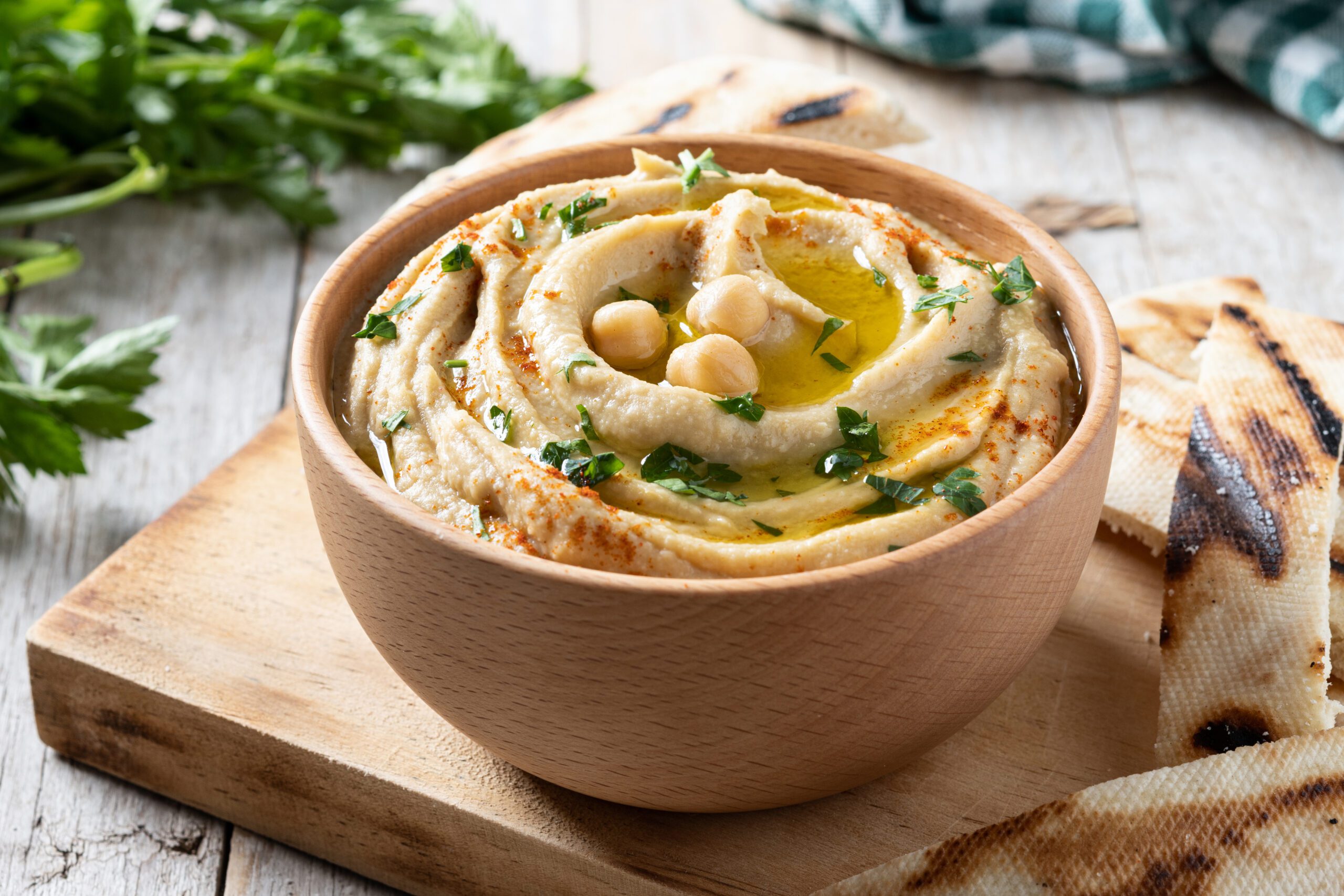
What is Hummus?
Hummus is a creamy and flavorful dip or spread made primarily from cooked and mashed chickpeas, also known as garbanzo beans. Hummus Recipe typically includes ingredients like tahini (a sesame seed paste), olive oil, fresh lemon juice, garlic, and various seasonings. Hummus is known for its smooth texture and savory taste, often enjoyed as a dip for pita bread, crackers, or fresh vegetables. It’s a popular Middle Eastern and Mediterranean dish and is loved for its versatility and delicious, nutty flavor.
Table of Contents
How does Hummus taste?
Hummus Recipe has a distinctive flavor profile that’s often described as creamy, nutty, and slightly tangy. Its taste can be summarized as follows:
1. Creamy: Hummus has a smooth and creamy texture. This is due to the blend of chickpeas and tahini (sesame seed paste) along with other ingredients.
2. Nutty: The tahini in hummus contributes a rich, nutty flavor. It’s somewhat similar to peanut butter but with a unique sesame undertone.
3. Slightly Tangy: Fresh lemon juice is a common ingredient in hummus, which adds a hint of tanginess and a bright, citrusy note.
4. Earthy: Chickpeas, a major ingredient in hummus, have an aromatic and beanlike taste that’s complementary to the other ingredients.
5. Garlic: Garlic, which provides a mild, savory, and somewhat spicy flavor to many hummus recipes, is also included.
6. Seasonings: A spice such as salt, cumin, or paprika that contributes to the overall flavor profile can also be added to a hummus according to its recipe.
Overall, hummus is known for its well-balanced, savory, and slightly tangy taste. It is flexible and will adapt to your needs using a variety of ingredients and flavorings. It’s widely used as a sauce on vegetables, pita bread or to spread inside sandwiches and wraps.
What to eat Hummus with?
Hummus is a versatile dip or spread that can go along with lots of different foods. Here are some easy ways to enjoy hummus:
- Pita Bread: Warm up some pita bread, cut it into triangles, or just tear it into pieces. Then, dip it into hummus for a tasty combo.
- Fresh Veggies: Hummus goes great with fresh veggies like carrots, cucumbers, bell peppers, cherry tomatoes, and celery. It’s a healthy snack that’ll fill you up.
- Crackers: Grab your favorite crackers – they could be whole wheat, multigrain, or gluten-free. Dip them into hummus for a crunchy and creamy treat.
- Bread: Spread hummus on slices of bread or use it as a filling for your sandwiches or wraps. It gives them a creamy kick.
- Falafel: Hummus is often served with falafel, those tasty fried balls made from chickpeas. The crispy falafel and creamy hummus make a perfect match.
- Grilled Meats: If you’re grilling chicken, lamb, or beef, don’t forget the hummus. It adds flavor and keeps the meat juicy.
- Salads: Mix hummus into your salad or drizzle it on top. It makes your salad creamy and adds flavor.
- Roasted Veggies: Smear hummus on roasted veggies like cauliflower, broccoli, or eggplant. It adds a little something extra.
- Wraps and Sandwiches: Instead of mayo or other spreads, use hummus in your wraps and sandwiches. It’s a tasty swap.
- Baked Potatoes: Try putting hummus on your baked potatoes for a unique and healthy twist.
- Pizza: Instead of regular tomato sauce, spread hummus on your pizza crust and add your favorite toppings.
- Sushi Rolls: Some sushi rolls use hummus to give them a creamy texture and extra flavor.
These are just a few ideas, but you can get creative. Hummus is a healthy addition that can jazz up your meals and snacks in lots of different ways.
Ingredients for Hummus Recipe:
Here are all the Ingredients used for the Hummus Recipe:
1. Cooked Chickpeas (1½ cups): Chickpeas are little round beans that are creamy when blended. They’re the main ingredient in hummus recipes and provide a smooth texture.
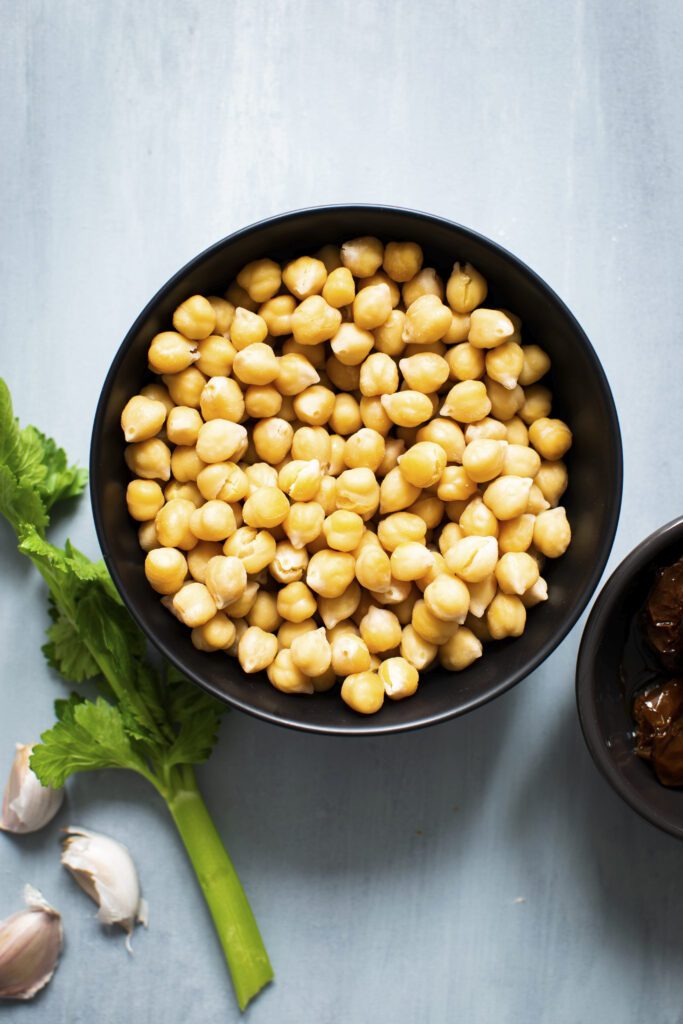
2. Smooth Tahini (⅓ cup): Tahini is like magic for hummus recipe. It’s a creamy paste made from sesame seeds and adds a nutty flavor. It makes hummus taste rich and smooth.
3. Extra-Virgin Olive Oil (2 tablespoons): This olive oil is extra special. It’s pressed from ripe olives and gives hummus recipe a fruity and rich taste. Plus, it makes the hummus silky.
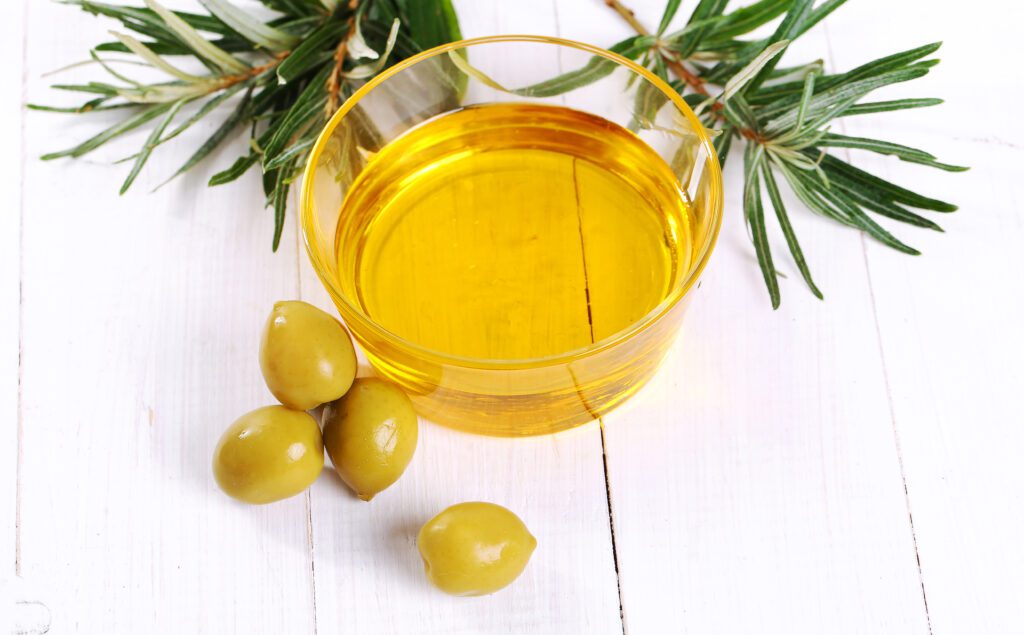
4. Fresh Lemon Juice (2 tablespoons, more to taste): Lemon juice adds a zesty, tangy flavor to the hummus recipe. It makes it taste fresh and bright.
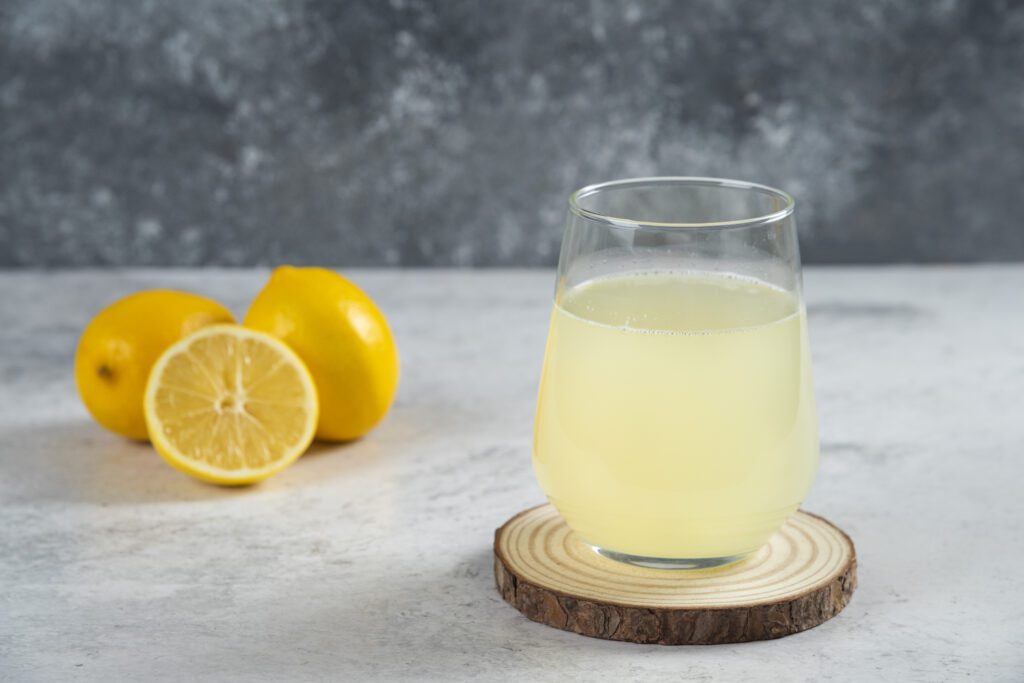
5. Garlic Clove (1): A garlic clove is a tiny piece of garlic. It’s super flavorful and gives the hummus recipe a little kick of spice. If you love garlic, you’ll love this!
6. Sea Salt (½ teaspoon): Sea salt is a special kind of salt that comes from the sea. It adds a pinch of saltiness to the hummus to make it taste just right.
7. Water (5 tablespoons, or as needed to blend): Water helps make the hummus smooth and creamy. You might need a bit more or less, depending on how thick or thin you like it.
8. Paprika, Red Pepper Flakes, or Parsley (for garnish, optional): These are like the decorations on top of the hummus recipe. Paprika adds color, red pepper flakes add a bit of spice, and parsley adds a fresh green touch.
9. Warm Pita Bread and/or Veggies (for serving): Pita bread is a soft, round bread that’s perfect for dipping. Veggies like carrot sticks and cucumber slices are great for scooping up hummus recipes too!
These ingredients come together to make a delicious and healthy Homemade Hummus recipe that’s perfect for dipping and snacking.
How to Make Hummus?
Blend the Chickpeas:
- Put chickpeas into a mixer or food processor that’s helping to mix things up.
- Add tahini, which is a soft paste made from sesame seeds, to the blender.
- Put a squeeze of the lemon juice in it. It’ll give you a tangy taste!

Season the Hummus:
- Drop in the garlic clove. It gives the hummus a little zing!
- Sprinkle in a tiny bit of sea salt. Not too much, just a pinch.
- Turn on the blender and let everything mix. If it’s too thick, add some water (a little at a time) to make it smooth.
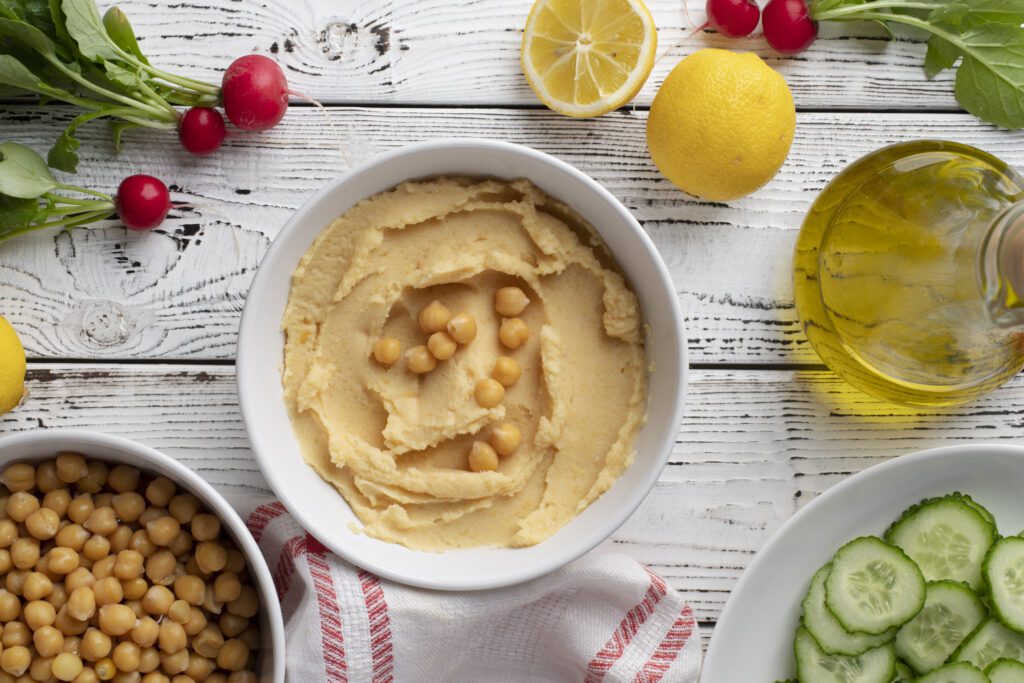
Serve with Fun Toppings:
- Once your hummus is very smooth, it will be prepared for eating. Put it into a bowl.
- You can sprinkle paprika, red pepper flakes, or parsley (green herbs) on top for a pop of color and flavor.
Grab Some Veggies and Pita:
- Now, you can use your hummus as a dip! It’s great with carrot sticks, cucumber slices, or warm pita bread. Just dip and enjoy!
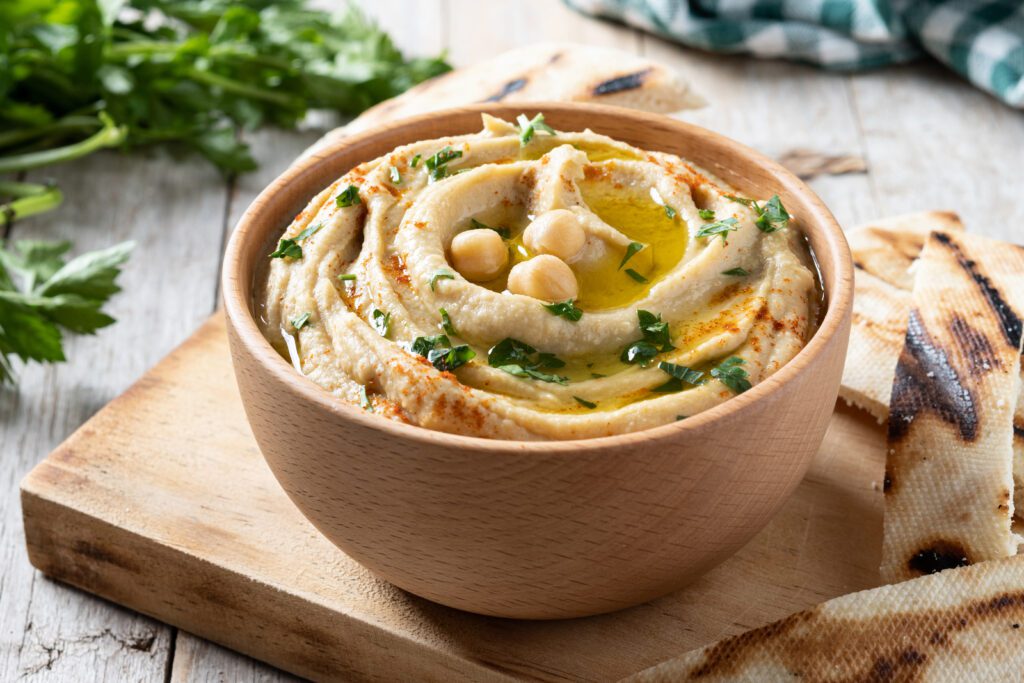
Variations and Substitutions:
- If you don’t have tahini, you can use peanut butter or skip it.
- Feel free to add other spices like cumin or a touch of honey for a different taste.
Why This Recipe Works:
The homemade hummus recipe is super fresh and doesn’t have any extra stuff you can’t pronounce. It’s just simple and yummy ingredients blended.
Equipment:
You can purchase the equipment from Amazon I highly suggest it because I use them.
Can you freeze Hummus?
Yes, you can freeze hummus. Freezing hummus can extend its shelf life for several months. To freeze hummus:
- Portion it: Start by dividing your hummus into smaller portions, depending on how much you typically use in one go. This makes it easier to thaw and use later.
- Airtight containers: Place each portion of hummus into airtight containers. Leave a bit of space at the top to account for expansion when it freezes.
- Label and date: Don’t forget to label each container with the freezing date. This helps you keep track of its freshness.
- Freeze: Pop the containers into your freezer. Hummus can stay good for about 4-6 months when frozen.
- Thaw and use: When you’re ready to enjoy your frozen hummus, transfer a container to the refrigerator to let it thaw. If you’re in a hurry, you can speed up the process by placing it in a bowl of warm water.
Remember to give your thawed hummus recipe a good stir before serving, as its texture might change slightly after freezing. Also, it’s best to freeze hummus without any toppings or garnishes. You can add those when you’re ready to serve to keep them fresh.
What to add to hummus to make it spicy?
To add some spicy flair to your hummus recipe, there are a few ingredients you can use, depending on how much heat you like. Here are some options:
1. Red Pepper Flakes: These little flakes are a simple way to give your hummus recipe some heat. Start with a small pinch and add more if you want it spicier.
2. Cayenne Pepper: A tiny dash of cayenne pepper can add a nice kick. Be careful; a little goes a long way.
3. Hot Sauce: Your favorite hot sauce can be stirred into your hummus recipe for a spicy and flavorful twist. Begin with a few drops and taste before adding more.
4.Fresh Chilies: If you’re a fan of serious spice, finely chop some fresh chili peppers like jalapeños, serranos, or habaneros. Add them to your hummus recipe, but be cautious – these can get very hot!
5. Sriracha Sauce: Sriracha is a popular spicy sauce that can be mixed into your hummus for an extra zesty punch.
6. Harissa Paste: Harissa is a North African chili paste that brings a smoky, intense heat to your hummus. Use it sparingly because it can be seriously hot.
7. Spicy Mustard: Consider using spicy brown mustard or Dijon mustard for both heat and flavor in your hummus.
8. Chili Powder: A pinch of chili powder or a chili spice mix can give your hummus a well-rounded spiciness.
Just remember to add these spicy elements gradually and taste as you go. It’s easier to add more heat than to cool things down if you overdo it. Adjust the spiciness to your liking, and enjoy your homemade spicy hummus recipe!
What to eat with hummus for weight loss?
Hummus can be a healthy and satisfying snack for weight loss when paired with the right foods. Here are some nutritious options to eat with hummus that can support your weight loss goals:
- Fresh Vegetables: Vegetables like carrot sticks, cucumber slices, bell pepper strips, cherry tomatoes, and celery are low in calories and high in fiber. They’re excellent choices for dipping into hummus recipes.
- Whole Wheat Pita Bread: Opt for whole wheat pita bread instead of regular pita. It’s higher in fiber and nutrients, making it a good match for hummus.
- Whole Grain Crackers: Look for whole grain or whole wheat crackers with minimal added ingredients. These can provide a satisfying crunch and added fiber.
- Rice Cakes: Choose plain or whole-grain rice cakes to spread with hummus. They’re low in calories and can provide a satisfying crunch.
- Hard-Boiled Eggs: Sliced hard-boiled eggs with a dollop of hummus can create a balanced and protein-rich snack.
- Lean Proteins: If you’re looking for a more substantial snack, consider pairing hummus with lean proteins like grilled chicken breast strips or turkey slices.
- Fruits: While not typically paired with hummus, fruits like apple slices or pear slices can offer a sweet and savory combination that’s both healthy and delicious.
- Salad: Use hummus as a creamy and nutritious salad dressing alternative. It can add flavor and richness to your salad without excess calories.
Remember that portion control is key when using hummus recipes for weight loss. While hummus recipe is a nutritious food, it does contain calories, so be mindful of how much you consume. Stick to reasonable serving sizes to support your weight loss efforts.
Is Hummus Keto Friendly?
As it contains a relatively high level of carbohydrates, mainly in the form of chickpeas and tahini, hummus is not usually considered keto friendly. To initiate ketosis, in which the body uses fat to get energy instead of carbohydrates, keto diets are focused on low carbohydrate consumption and high fat intake.
Here’s a rough breakdown of the macronutrients in a standard serving of hummus (about 2 tablespoons):
- Carbohydrates: Approximately 4-6 grams
- Fat: About 2-3 grams
- Protein: Around 1-2 grams
While hummus does provide some healthy fats and protein, the carb content can add up quickly for those following a strict ketogenic diet. Most keto diets limit daily carb intake to around 20-50 grams of net carbs, which can be easily exceeded by consuming even a small amount of hummus.

However, some variations of hummus with lower carb content may be suitable for a keto diet. These versions might use fewer chickpeas or substitute them with lower-carb alternatives like cauliflower or zucchini. You can also find keto-friendly recipes for hummus that modify the traditional ingredients to fit within the keto macronutrient ratios.
It’s important to check the nutritional label on a particular product you are thinking of, or find a keto-friendly hummus recipe that complements your diet objectives if you have been ketogenic and wish to take advantage of Hummus.
Is hummus vegan?
Yes, hummus recipe is generally considered vegan. The traditional ingredients used in making hummus recipes are chickpeas (garbanzo beans), tahini (a sesame seed paste), etc None of these ingredients are derived from animals, which makes hummus recipe a plant-based and vegan-friendly food.
However, it’s important to exercise caution when purchasing store-bought hummus or eating it at restaurants. Some commercial brands may add additional ingredients that are not vegan, such as dairy-based products or flavorings.
Is Hummus gluten-free?
Traditional homemade hummus recipe are typically gluten-free. The hummus recipe is primarily composed of chickpeas (garbanzo beans), tahini (a sesame seed paste), olive oil, lemon juice, garlic, and various seasonings. None of these ingredients naturally contain gluten.
However, when purchasing store-bought hummus or dining out, it’s important to read the label or inquire about the ingredients. Some commercial brands might include additives or flavorings that contain gluten. Additionally, cross-contamination can happen in facilities that handle gluten-containing products.
For individuals with celiac disease or significant gluten sensitivity, it’s advisable to opt for certified gluten-free hummus to ensure safety. But generally, if you prepare hummus recipe at home using basic, unprocessed ingredients, it should be gluten-free and suitable for those with gluten intolerances or sensitivities.
What goes with hummus for dinner?
Certainly, here are some dinner ideas that pair well with hummus:
1. Grilled Meats: Hummus is an excellent side dip for grilled chicken, lamb, or beef.
2. Roasted Vegetables: Drizzle olive oil over roasted veggies like carrots, zucchini, and bell peppers and serve them with a side of hummus.
3. Mediterranean Bowls: Create bowls with falafel, couscous, roasted chickpeas, cucumbers, tomatoes, olives, and hummus.
4. Pita Bread: Warm pita bread and serve it with hummus for a delightful appetizer or side.
5. Grain Salads: Incorporate hummus as a dressing for salads made with quinoa, bulgur, or couscous.
6. Stuffed Vegetables: Fill bell peppers, zucchini, or eggplant with a mixture of grains, roasted chickpeas, and hummus.
7. Hummus-Topped Proteins: Enhance the flavor and creaminess of grilled or baked fish, chicken, or tofu by adding a spoonful of hummus.
8. Wrap or Sandwich Spread: Use hummus as a spread in wraps or sandwiches with grilled vegetables, falafel, or turkey.
9. Hummus-Centric Bowl: Build a dinner bowl around hummus, accompanied by an array of fresh vegetables, olives, pita bread, and your choice of protein.
These suggestions offer a variety of flavors and textures to complement your hummus recipe and create a satisfying dinner experience.
How does Hummus taste?
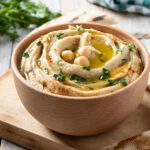
Hummus has a distinctive flavor profile that’s often described as creamy, nutty, and slightly tangy. Its taste can be summarized as follows:
1. Creamy: Hummus has a smooth and creamy texture. This is due to the blend of chickpeas and tahini (sesame seed paste) along with other ingredients.
2. Nutty: The tahini in hummus contributes a rich, nutty flavor. It’s somewhat similar to peanut butter but with a unique sesame undertone.
3. Slightly Tangy: Fresh lemon juice is a common ingredient in hummus, which adds a hint of tanginess and a bright, citrusy note.
4. Earthy: Chickpeas, a major ingredient in hummus, have an aromatic and beanlike taste that’s complementary to the other ingredients.
5. Garlic: Garlic, which provides a mild, savory, and somewhat spicy flavor to many hummus recipes, is also included.
6. Seasonings: A spice such as salt, cumin, or paprika that contributes to the overall flavor profile can also be added to a hummus according to its recipe.
Overall, hummus is known for its well-balanced, savory, and slightly tangy taste. It is flexible, which will adapt to your needs by means of a variety of ingredients and flavorings. It’s widely used as a sauce on vegetables, pita bread or to spread inside sandwiches and wraps.
Is Hummus Keto Friendly?
As it contains a relatively high level of carbohydrates, mainly in the form of chickpeas and tahini, hummus is not usually considered keto-friendly. To initiate ketosis, in which the body uses fat to get energy instead of carbohydrates, keto diets are focused on low carbohydrate consumption and high fat intake.
Here’s a rough breakdown of the macronutrients in a standard serving of hummus (about 2 tablespoons):
Carbohydrates: Approximately 4-6 grams
Fat: About 2-3 grams
Protein: Around 1-2 grams
While hummus does provide some healthy fats and protein, the carb content can add up quickly for those following a strict ketogenic diet. Most keto diets limit daily carb intake to around 20-50 grams of net carbs, which can be easily exceeded by consuming even a small amount of hummus.
However, some variations of hummus with lower carb content may be suitable for a keto diet. These versions might use fewer chickpeas or substitute them with lower-carb alternatives like cauliflower or zucchini. You can also find keto-friendly recipes for hummus that modify the traditional ingredients to fit within the keto macronutrient ratios.
It’s important to check the nutritional label on a particular product you are thinking of, or find keto-friendly hummus recipes that compliment your diet objectives, if you have been ketogenic and wish to take advantage of Hummus.
Is hummus vegan?
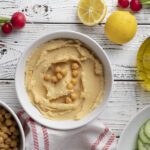
Yes, hummus is generally considered vegan. The traditional ingredients used in making hummus are chickpeas (garbanzo beans), tahini (a sesame seed paste), etc None of these ingredients are derived from animals, which makes hummus a plant-based and vegan-friendly food.
However, it’s important to exercise caution when purchasing store-bought hummus or eating it at restaurants. Some commercial brands may add additional ingredients that are not vegan, such as dairy-based products or flavorings.
Is hummus gluten-free?
Traditional homemade hummus is typically gluten-free. Hummus is primarily composed of chickpeas (garbanzo beans), tahini (a sesame seed paste), olive oil, lemon juice, garlic, and various seasonings. None of these ingredients naturally contain gluten.
However, when purchasing store-bought hummus or dining out, it’s important to read the label or inquire about the ingredients. Some commercial brands might include additives or flavorings that contain gluten. Additionally, cross-contamination can happen in facilities that handle gluten-containing products.
For individuals with celiac disease or significant gluten sensitivity, it’s advisable to opt for certified gluten-free hummus to ensure safety. But generally, if you prepare hummus at home using basic, unprocessed ingredients, it should be gluten-free and suitable for those with gluten intolerances or sensitivities.
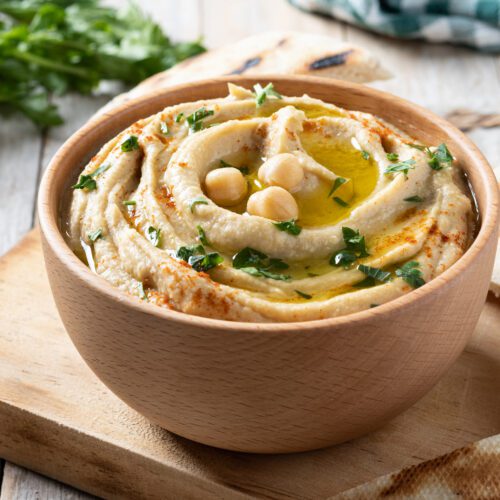
Hummus Recipe ( Easy, Best and Homemade)
Equipment
- Blender Or Food Processor
Ingredients
- 1½ cups Cooked chickpeas Drained and rinsed
- ⅓ cup Smooth tahini (a creamy sesame seed paste)
- 2 tbsp Olive oil Extra Virgin
- 2 tbsp Fresh Lemon Juice More to taste
- 1 clove Garlic (a tiny piece of garlic)
- ½ tsp Sea Salt (a pinch of salt)
- 5 tbsp Water or as needed to blend
- Paprika or Red Flaked or parsley for garnish (optional)
- Warm pita bread and/or veggies for serving
Instructions
- Put chickpeas into a mixer or food processor that's helping to mix things up. Add tahini, which's a soft paste made from sesame seeds, to the blender. Put a squeeze of the lemon juice in it. It'll give you a tangy taste!

- Drop in the garlic clove. It gives the hummus a little zing. Sprinkle in a tiny bit of sea salt. Not too much, just a pinch. Turn on the blender and let everything mix together. If it's too thick, add some water (a little at a time) to make it smooth.

- Once your hummus is very smooth, it will be prepared for eating. Put it into a bowl. You can sprinkle paprika, red pepper flakes, or parsley (green herbs) on top for a pop of color and flavor.
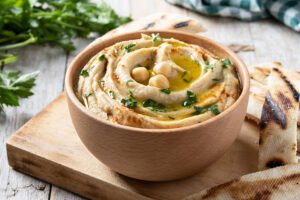
- Now, you can use your hummus as a dip! It's great with carrot sticks, cucumber slices, or warm pita bread. Just dip and enjoy!
Notes
- If you don’t have tahini, you can use peanut butter or skip it.
- Feel free to add other spices like cumin or a touch of honey for a different taste.


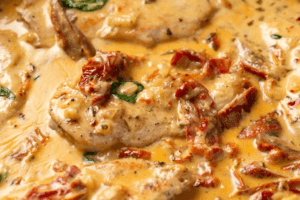
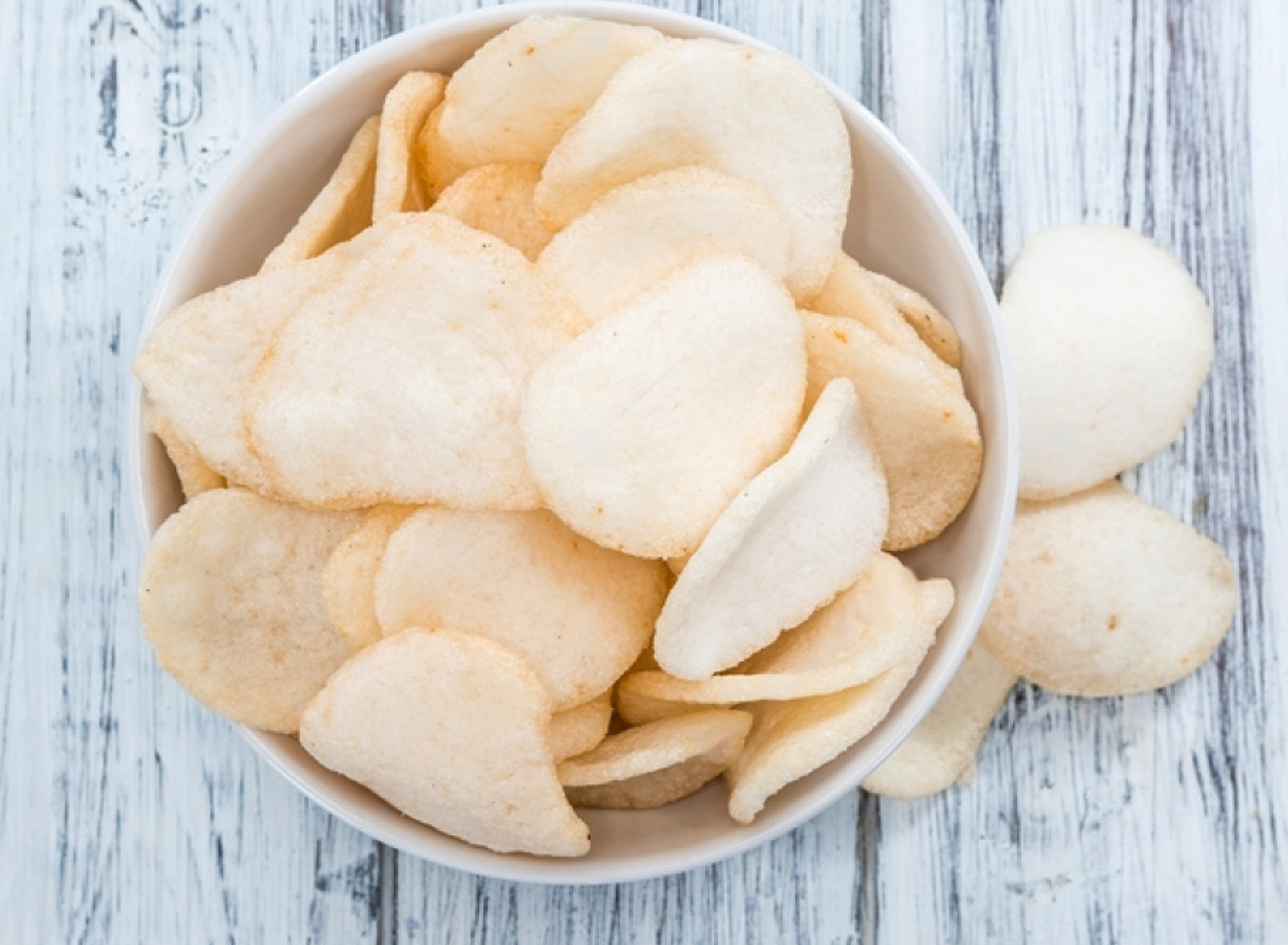
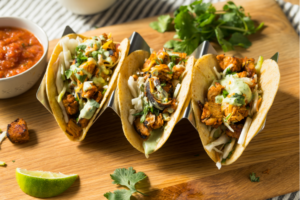
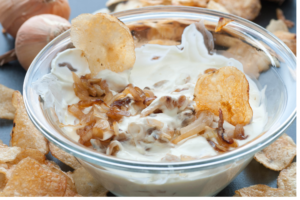

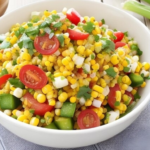
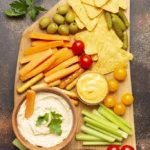
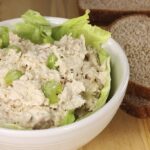
[…] PM: Carrot and cucumber sticks with hummus for a crunchy and nutritious […]